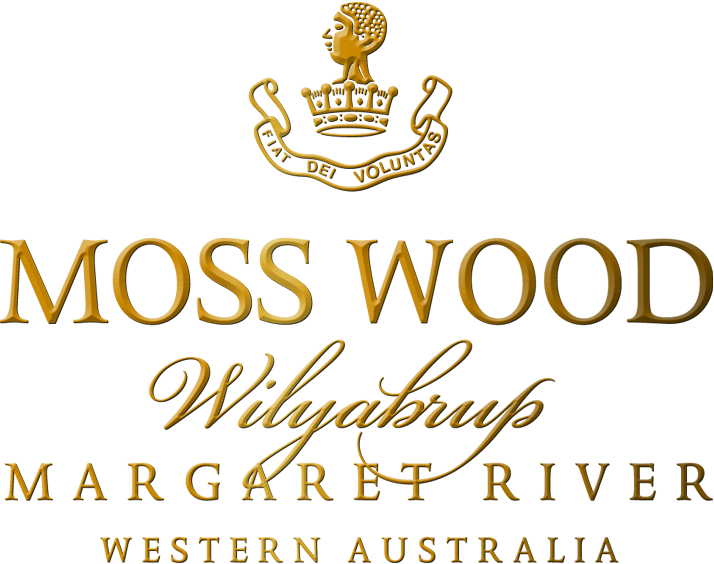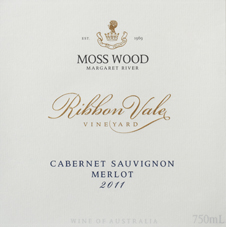Moss Wood Ribbon Vale 2011 Cabernet Sauvignon Merlot
Moss Wood Ribbon Vale 2011 Cabernet Sauvignon Merlot
Wine Facts
| Harvested: | 16/3/2011 |
| Bottled: | 8/4/2013 |
| Released: | 2/9/2013 |
| Alcohol: | 14.00% |
| Vintage Rating: | 9/10 |
SOLD OUT
Tasting Notes
Colour: Bright condition; deep brick red hue.
Nose: A deep and complex nose combining rich red currant, tobacco, earth, tar and cedar; complex, with great power.
Palate: Full bodied, great concentration of red and dark fruit; complexity from tar and aniseed notes. The tannins are ripe and firm but do not impinge on the texture, giving very smooth mouth feel and length.
- 2011 Moss Wood Ribbon Vale Vineyard – eRobertParker.com – Lisa Perrotti Brown MW
- Ribbon Vale 2011 Cabernet Sauvignon Merlot – International Wine Cellar July/August 2014 – Best New Wines From Australia – Josh Raynolds
- Ribbon Vale Cabernet Sauvignon Merlot 2011 – Cameron Douglas, Master Sommelier – camerondouglasms.blogspot.co.nz
- Moss Wood Ribbon Vale Cabernet Sauvignon Merlot 2011 – Ray Jordan – West Weekend Magazine
- 2011 Ribbon Vale Cabernet Merlot- James Halliday – The Wine Companion
[hr]
Vintage Notes
There is a strong theme running through the 2011 vintage – consistent warmth. Our January temperatures were typical, if not slightly on the higher side, with an average of 20.97oC but things really got going in February. The mean monthly temp was 23.76oC, making it the warmest February since our weather station was installed in 1998. To put that into perspective, the average temperature for that month is 21.21oC. Given a variation of 0.5o will produce a perceivable effect on fruit aromas, this difference of 2.55o was significant.
Examining the temperature record further, we see that the vines received 49 hours above 33oC during February. Cabernet Sauvignon would only need that much warmth across the entire growing season to display ripe fruit characters, so to have received that much in one month is best described as an abundance of warmth.
Vines are fairly hardy plants and hot weather, per se, is not a problem, as long as they’re not subjected to extreme temperatures and this is where 2011 really scores. Despite a warmer than average February, our hottest day was 39.7oC and apart from that, the maxima exceeded 33oC on 10 days.
March was also warm, with an average temperature of 21.36oC, 1.54o above the average. However, the maximuma were more typical of Autumn and we only received 7 hours above 33oC.
To summarise the impact of all this is relatively simple. We experienced consistent ripening through the season and so sugar accumulation by the vines was steady and was always going to comfortably achieve “normal” levels. Furthermore, the tendency toward higher temperatures in February, without excess extreme heat, has promoted typically ripe fruit characters and tannins giving all the wines generous mouth feel, not unlike the 2007’s but with more finesse.
As an aside, we don’t have the data for 2007 because the temperature probe wasn’t operating properly. What we assume from the harvest dates and taste of the wines is that 2011 was a little cooler.
Mother Nature didn’t give us too many surprises, although things didn’t go entirely our way. Cabernet Franc gave a yield of 6.27 tonnes per hectare, down by 30% and Merlot cropped at 7.56 tonnes per hectare, down 13%. On the other hand, Cabernet Sauvignon, at 7.39 tonnes per hectare, was down only 4%. A quick look at our rainfall record tells us why.
Cabernet Franc started flowering on 1st November and was virtually right in the middle of the process when, on 8th, 9th and 10th November, we had a good dump of rain – 32 millimetres fell and temperatures dropped down to 6oC overnight. No surprise then that its bunch weights fell by 5%. The fact that the yield loss was greater than this would suggest bunch numbers and actual berry weights being lower than average but we don’t know for sure. Readers may be amused to learn that not even Keith is a big enough nerd to separate berries from the bunch and count and weigh them.
The other two varieties show just what a difference a day (or two) makes. Merlot started flowering a few days later on 4th November, so it wasn’t quite as advanced when the rain came, resulting in a much smaller yield loss. Cabernet Sauvignon started after the event was behind us and it was virtually unaffected.
Despite the rain interruption we kept our spray program on track and disease was not a problem and neither were the birds.
With all the warm weather and low to average yields, the vineyard sailed quickly on to an early harvest. Merlot came off first on 3rd March, 2 weeks ahead of average, followed by Cabernet Franc on 10th March, 6 days early and then Cabernet Sauvignon was picked on 16th March, also 2 weeks early. The Merlot was picked at its average ripeness of 13.1o Baume, Cabernet Franc at 13.2o Baume, slightly less ripe than the 13.4o average and Cabernet Sauvignon came off right on the average at 13.6o.
[hr]
Production Notes
Median Harvest Dates and Ripeness:
Cabernet Sauvignon – 13.6o Baume; 16th March, 2011
Merlot – 13.1o Baume; 3rd March, 2011
Cabernet Franc – 13.2o Baume; 10th March, 2011
All three varieties were handpicked and then transported to the winery for processing. The fruit was de-stemmed into fermenters, seeded for primary fermentation with a pure yeast culture and fermentation proceeded at temperatures up to 28oC. Each batch was plunged 3 times per day and tasted twice per day to monitor the levels of extraction. One of the interesting points about the 2011 vintage is that the wines developed good tannin balance with relatively short skin contact time. The Cabernet Franc was pressed after 9 days, the Merlot after 12 days and the Cabernet Sauvignon after 15 days.
After pressing the wines underwent malolactic fermentation in tanks and were then racked into barrels during May and June 2011. All the oak was French and 20% were new.
In February 2012 all batches were racked to tank and after extensive tasting trials the final blends were assembled. The Cabernet Sauvignon Merlot wine proved to be something of a departure from tradition, with the final wine being made up of 55% Cabernet Sauvignon, 42% Merlot and 3% Cabernet Franc. The smaller crops in the latter two, but especially the Merlot, seemed to enhance their concentration and depth and made much bigger contributions to the wine than would normally be the case.
The Merlot wine was more closely aligned with the past, the final blend being 93% Merlot and 7% Cabernet Franc. In this blend the concentration of the Cabernet Franc tannins really added significant palate weight. The two blended wines were returned to oak for a further 12 months.
In February 2013 they were racked from barrel and fining trials were carried out. Neither wine was improved by fining, so no additions were made. This is further testament to the balance and ripeness of the tannins in 2011.
Both wines were sterile filtered and bottled on 8th April, 2013.
[hr]
Cellaring Notes
With the soft, ripe tannins of 2011, the wine is enjoyable now but has everything required for a long life in the cellar. It shares the style and presence of 2007, 2003 and 1983 and so we expect it will take until 2026 for the wine to develop the full range of its aged characters, like smoke, wax and leather and to show some softening of the tannin.

